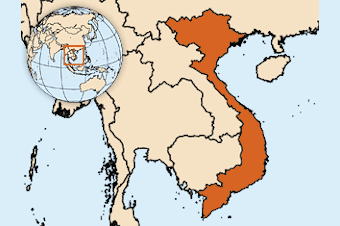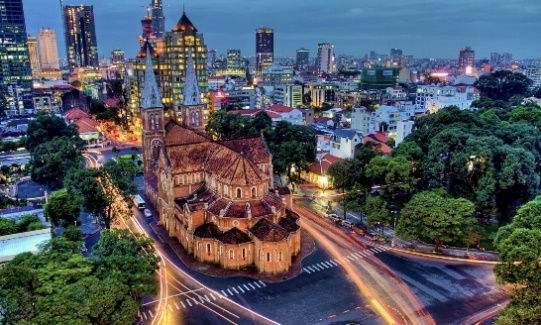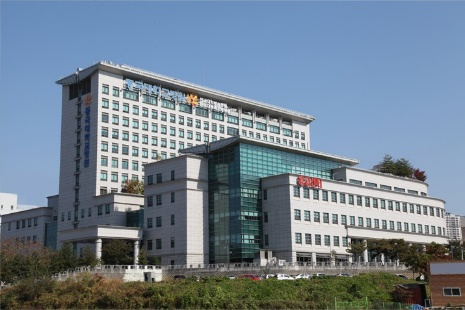

Vietnam
1. Statistics
Total population (2016) 94,569,000
Gross national product per capita (international PPP dollars, 2013) 5,030
Estimated life expectancy at birth m/w (years, 2016) 72/81
Probability of dying (per 1,000 live births, 2018) under age five 21
Probability of dying between the ages of 15-60 m/w (per 1,000 live births, 2016) 182/66
Total health care expenditures per capita (in international dollars, 2014) 390
Total health care expenditures as a % of GNP (2014) 7.1
Recent data from the Global Health Observatory
2. General information about the country

Vietnam is a multinational country with a developed economy that plays an important role in the Association of Southeast Asian Nations and in the world at large. The direct access to the Chinese Sea and the rich nature have given impetus to the development of tourism - nowadays Vietnam is one of the most popular countries among exotic vacationers.
Modern Vietnam with its unique traditions is the result of a mixture of cultures and customs of different tribes. On its territory emerged and decayed powerful civilizations, which had to restrain the invasions of China and Mongolia.
For a long time the country was separated, but all ended with the merger of North and South into the united Socialist Republic of Vietnam, which in 1992 was reformed and embarked on a course of liberalization and democratization. Currently, the state is rapidly developing in economic, scientific and industrial directions. The tourism sector plays a significant role.
Relatively small in area, Vietnam is distinguished by natural and climatic diversity. The country is clearly divided into three zones: North Vietnam (Bac Bo), Central Vietnam (Trung Bo) and South Vietnam (Nam Bo). This division predetermined the internal differences in the economy and the general way of life of the people in different regions of Vietnam.
This is a surprisingly versatile country. However, first of all it attracts with its nature: golden beaches, untouched jungle, deep caves, coral reefs - all this is located in a relatively small territory.
Vietnam's outlook seems positive, with the economy projected to grow about 6.8 percent in 2021 and then stabilize at about 6.5 percent, according to the World Bank's latest "Taking Stock" economic report on Vietnam.
"Vietnam is at the crossroads of recovery after COVID-19. The country has an opportunity to embark on a greener, smarter and more inclusive development path that will increase resilience to future shocks from both pandemics and climate disasters," said Carolyn Turk, World Bank regional director for Vietnam. "Authorities must address environmental and climate issues with the same sense of urgency as they did with COVID-19, because the cost of inaction is already clear and will become even more irreversible. The recent tropical storms in Vietnam's central region and rising air pollution in the country's major cities are a good illustration of this instability."
The external sector has been the main driver of Vietnam's economic growth over the past decade.
Foreign investors have continued to invest or relocate production activities to Vietnam because of the country's good governance even in the face of the pandemic.
3. The health care system in Vietnam (prevention system)

Vietnam is the 14th most populous country in the world (about 90 million people), and the 8th most populous country in Asia. In 1986, the government embarked on a series of economic and political reforms that began Vietnam's journey toward integration into the world economy. Since 2000, Vietnam's economic growth rate has been one of the highest in the world.
Despite the government's serious efforts to develop the economy, the country's health care faces many problems. One of them is infectious diseases, as well as an increase in chronic diseases (diabetes, cancer). A significant number of people are still suffering from the consequences of the Vietnam War of the 1960s.
The Vietnamese government spends 0.9% of its gross domestic product (GDP) on the health care system. According to the World Health Organization (WHO), Vietnam has an average of 7-8 health workers and 25 hospital beds for every 10,000 citizens. Global averages are much higher at 15 health workers and 30 beds for every 10,000 people. The availability and quality of medical services depends on the area of residence. It is extremely difficult to get specialized care in rural areas, as most hospitals and clinics are located in large cities: Hanoi, Ho Chi Minh City and Hai Phong.
Vietnam's health care system is a combination of Western medical technology and the traditions of Eastern medicine. The Vietnamese government is working to create an effective health insurance plan to provide all citizens with affordable basic medical care, but currently the Vietnamese pay for medical services themselves, and in many cases people prefer to go to private hospitals, which are much better equipped. Vietnamese public hospitals are quite different from those in Europe and America. In Vietnam, public hospitals are poor, they lack modern equipment, doctors in most cases speak only Vietnamese, and the quality of medical care varies greatly from region to region.
Vietnam has a national health program (tuberculosis control, immunization, etc.). Health insurance is state-run. The main causes of death are cardiovascular and pulmonary diseases, cancer and diabetes. Accidents take more than 20% of all deaths.
Private hospitals in Vietnam compare favorably with public hospitals, for example, private hospitals in Hanoi and Ho Chi Minh City are staffed by doctors from the United States, South Korea, Japan and France, as well as Vietnamese specialists who have been trained abroad. Private hospitals target affluent Vietnamese citizens and medical tourists. They cooperate with large overseas insurance companies and are capable to satisfy the patients' demands.
On the whole, treatment costs in Vietnam are much lower than in Western countries and the neighbouring highly developed Asian countries. But the rates of doctors treating foreigners are higher than those serving Vietnamese. Such doctors are very well trained and speak foreign languages - mainly English or French.
4. Most well-known Vietnamese public and private hospitals
Public Hospitals: Bach Mai Public Hospital, the largest in Hanoi, known for its resilience against U.S. bombing during Operation Rolling Thunder, during the Vietnam War, K Hospital - with three campuses is the largest and most extensive cancer hospital in the country, Mai Huong Hospita, St. Paul's Hospital, Thanh Nhan Hospital, Viet Duc Hospital, Vietnam National Children's Hospital, Hospital (or Army Central Hospital, Boc Ninh Province Tuberculosis Hospital, Boc Ninh Province Psychiatric Hospital, Boc Ninh Province Dermatology Lepra Hospital, Cho Ray Hospital , the largest hospital in Ho Chi Minh City, University Medical Center - Ho Chi Minh City University of Medicine and Pharmacy, Ho Chi Minh City Institute of Hygiene and Public Health, Pasteur Institute, Ho Chi Minh City Institute of Malaria, Ho Chi Minh City Cancer Hospital, Ho Chi Minh City Hospital of Dermatology and Venereal Diseases, Ho Chi Minh City Ear-Nose-Throat Hospital, Ho Chi Minh City Odonto Dental Hospital, Ho Chi Minh City Ophthalmological Hospital, Ho Chi Minh City Tropical Diseases Hospital, Hong Vong OB/GYN Hospital, Pham Ngoc Thuch Tuberculosis and Lung Disease Hospital, etc.
Private hospitals: Hôpital Français de Hanoi, Vinmec Times City International Hospital, Red River Delta, Hoi City Phung, Cuongninh Province, Vietnam-Swedish Hospital, and others.
Text translated by a representative of «Russian Medical Women’s Association» Bondarenko Anastasia.




